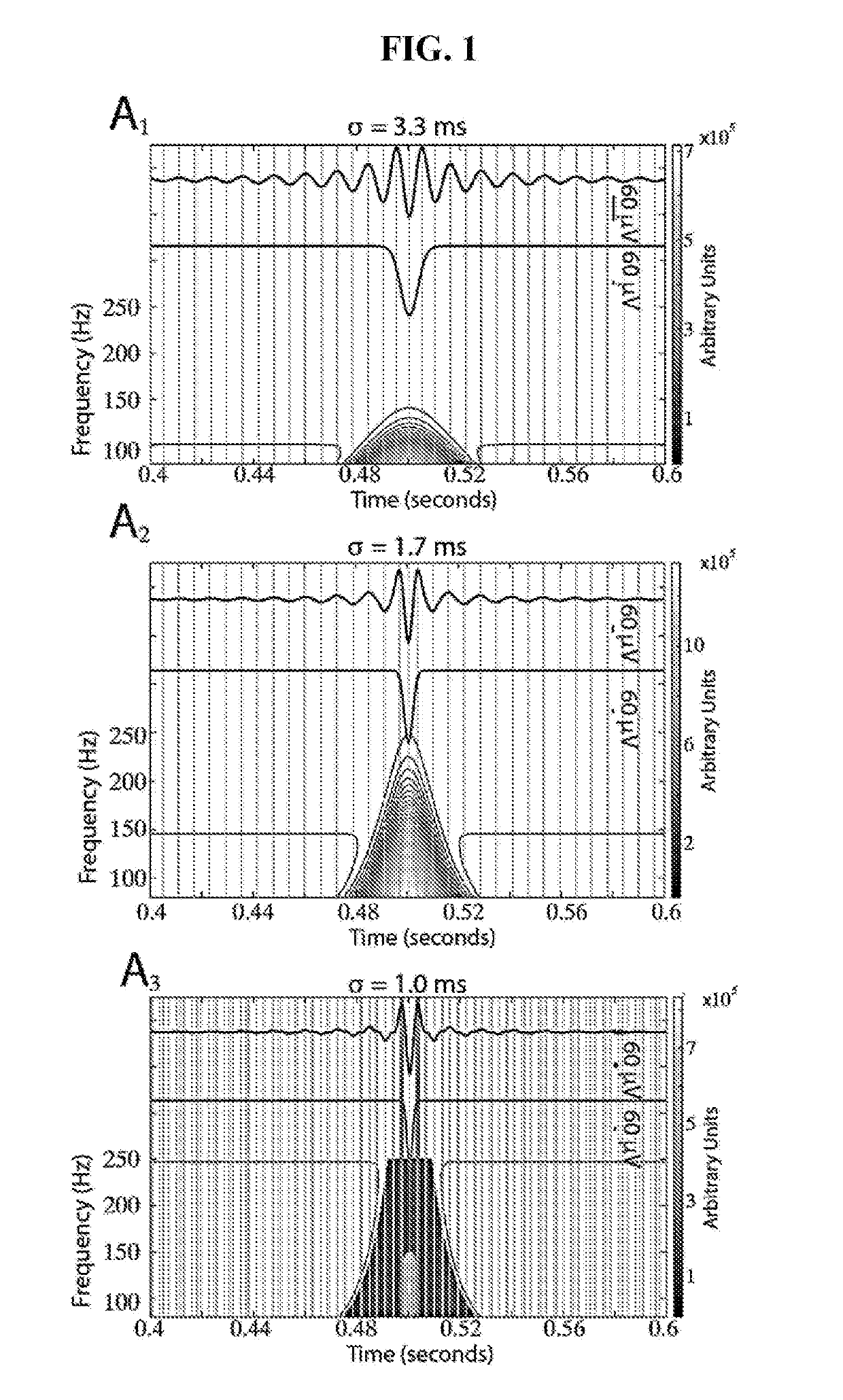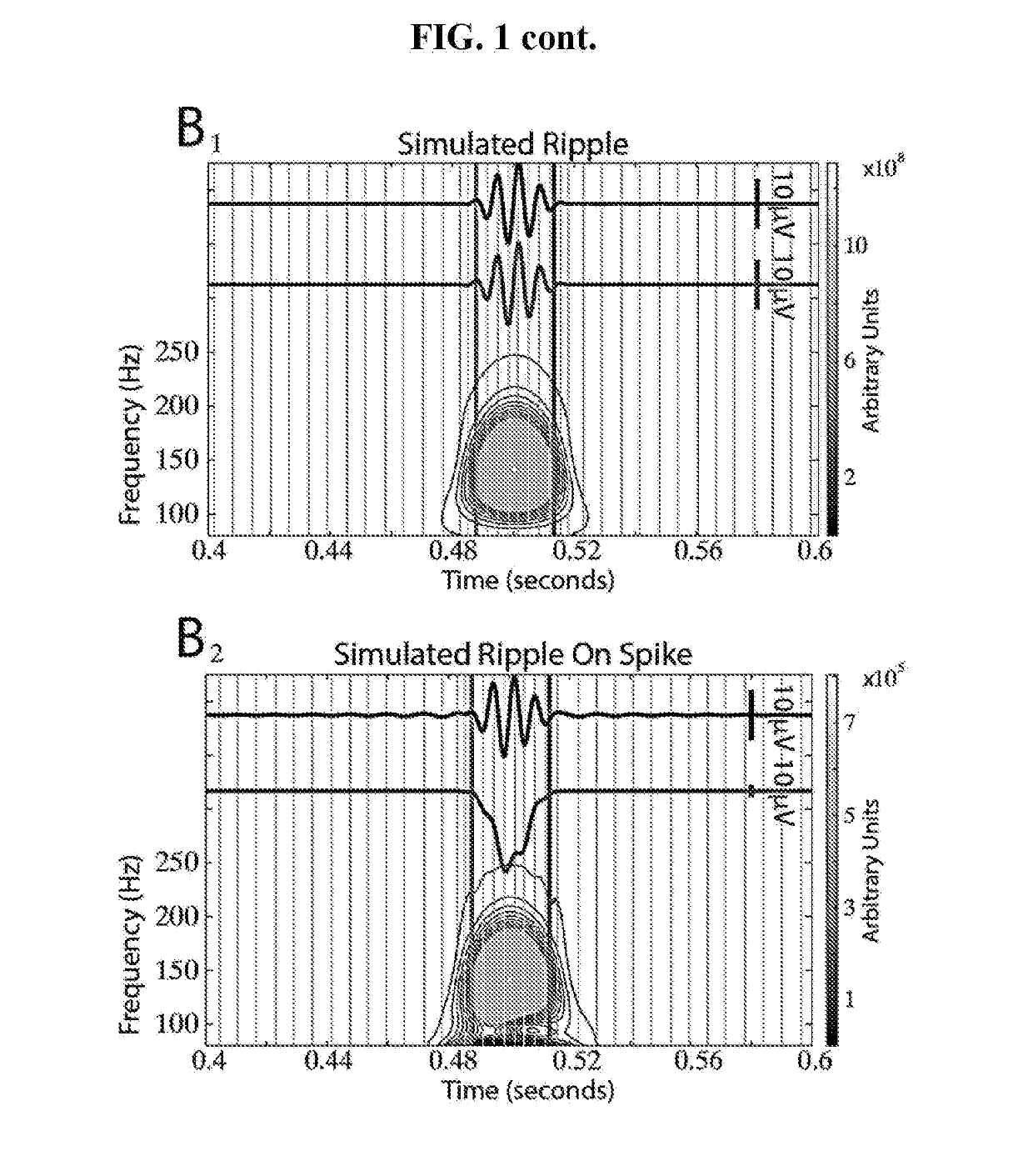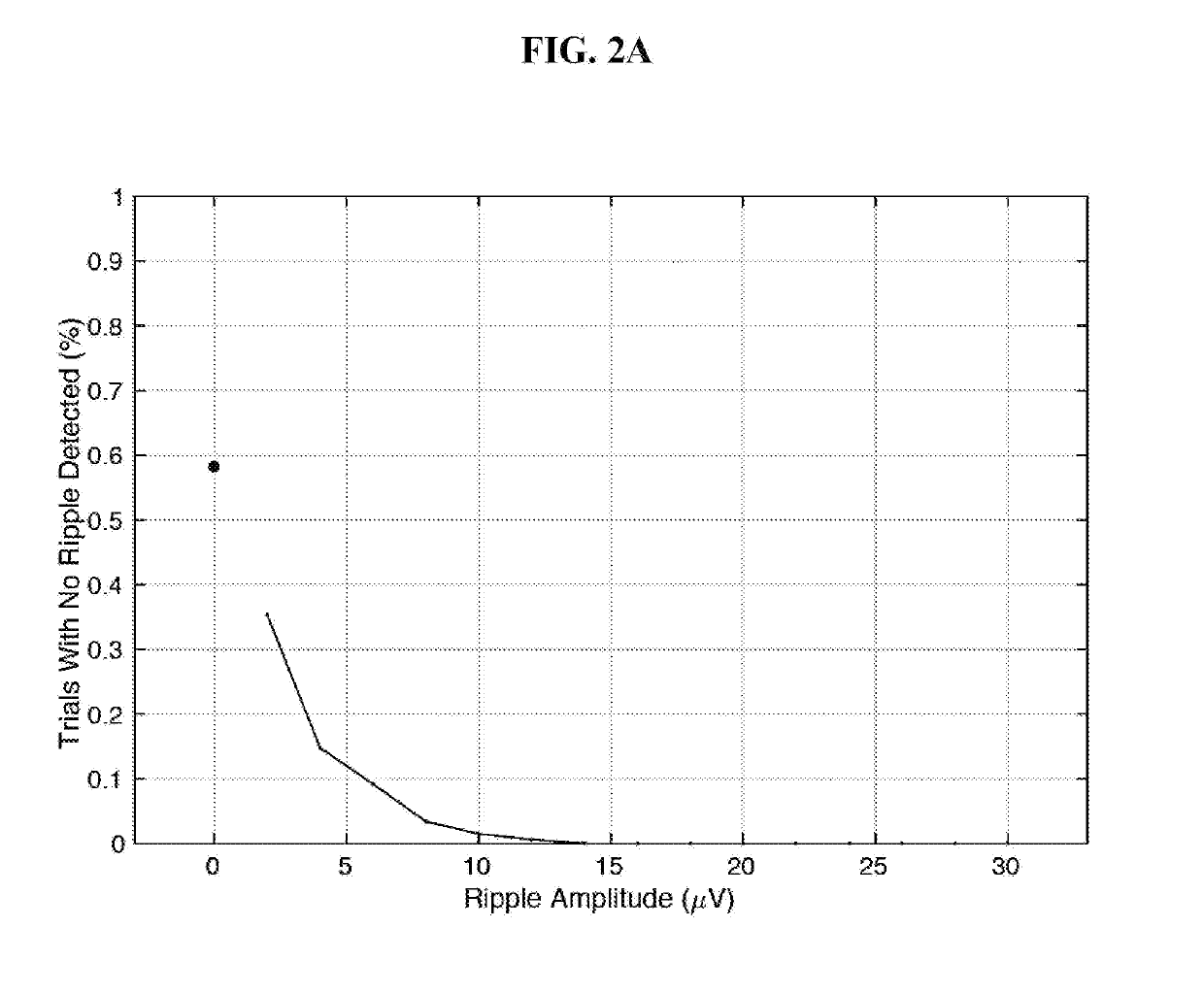Signal processing method for distinguishing and characterizing high-frequency oscillations
a high-frequency oscillation and signal processing technology, applied in the field of characterizing high-frequency oscillations, can solve the problems of false detection of hfos, inability to easily inability to allow digital filtering of brain activity, so as to improve cognition, enhance memory encoding, and improve cognition.
- Summary
- Abstract
- Description
- Claims
- Application Information
AI Technical Summary
Benefits of technology
Problems solved by technology
Method used
Image
Examples
Embodiment Construction
[0061]In both manual and automated HFO detection, it is common practice to first apply a high pass filter to the continuous intracranial EEG (iEEG) or local field potential (LFP) recordings. After high-pass filtering, HFOs can be observed visually or detected automatically as an increase in the signal amplitude above a threshold of 3-5 standard deviations of the mean for at least three oscillatory cycles.
[0062]However, when sharp transients such as inter-ictal epileptiform spikes (IES) are band-pass filtered a sinusoid-like waveform resembling an HFO can result. The energy spread over a continuous broad frequency range is due to how transients are represented in the frequency space, because the Fourier transform of a Dirac impulse is a constant.
[0063]One strategy for distinguishing true HFOs from false HFOs is based on time-frequency analysis using wavelets. A wavelet convolution or transform of a sharp transient appears as a “candle” with a gradual and continuous taper in power wit...
PUM
 Login to View More
Login to View More Abstract
Description
Claims
Application Information
 Login to View More
Login to View More - R&D
- Intellectual Property
- Life Sciences
- Materials
- Tech Scout
- Unparalleled Data Quality
- Higher Quality Content
- 60% Fewer Hallucinations
Browse by: Latest US Patents, China's latest patents, Technical Efficacy Thesaurus, Application Domain, Technology Topic, Popular Technical Reports.
© 2025 PatSnap. All rights reserved.Legal|Privacy policy|Modern Slavery Act Transparency Statement|Sitemap|About US| Contact US: help@patsnap.com



